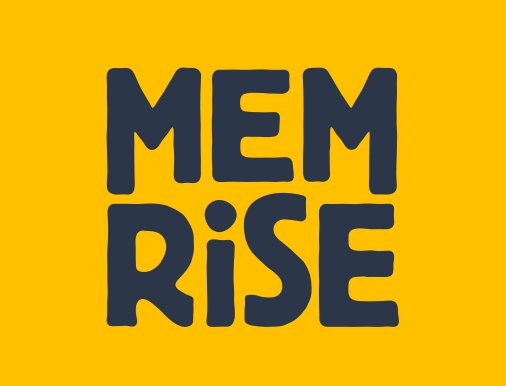Guide to Taiji Romanisation Spelling helps you understand the writing system created for Penang Hokkien.
Taiji Romanisation is created not only to phonetically represent the sounds in Penang Hokkien, it is also intended to preserve the spelling of common words, while helping visitors and foreigners make sense of how the locals spell.
While most words are spelled phonetically according to their sound, words that sound exactly the same (otherwise known as homographs) may be distinguished using alternative spellings (called homophones), to avoide the likelihood of ambiguity. To accomplish this, each sound in Penang Hokkien may have more than one way of spelling it. The vowel sound /i/ for example, may be represented by the letter "i" or the digraph "ee". This is explained and detailed below.
Although this form of spelling may appear confusing to foreign learners, Malaysians exposed to local education are usually able to pronounce words in Penang Hokkien intuitively. Nevertheless, all the words will be accompanied by audio-on-demand speaker icons, so that learners can hear how they are pronounced.
In the previous chapter, I introduced the International Phonetic Alphabet. Here, we look at how words in Penang Hokkien are spelled based on their IPA pronunciation.
Insight into the Taiji Romanisation for Penang Hokkien
The Taiji Romanisation was invented around March 2013, adopting traits from Peh-oe-ji, Malay, English and Mandarin. It underwent refinement in July of the same year, to bring the system into closer alignment to local spelling convention (and in so doing, distancing it from Peh-oe-ji, on which it was originally based). Apart from fine tuning, it has remained largely unchanged since. The following articles provide insights into the expectations of this romanisation system.Updates
- 11 December, 2013: Audio-on-demand is added to this page.
- 9 July, 2013: Revision of spelling began with a tidying up of spelling. Symbols from the International Phonetic Alphabet are added in square brackets [] to show the approximate sound expected.
- 25 June, 2013: This chapter is revised with the inclusion of the [ə] and [ĩ] sounds.
IPA Vowels and Semivowels
[a]

a, ar, ah
The open front unrounded vowel
ka1 [ka]
 : (verb) to cut
: (verb) to cutpa4 [pa]
 : (adjective) sated
: (adjective) satedsang1 [saŋ]
 : (adjective) loose
: (adjective) loosesar1 hor3 fun2 [sa-hɔ-fan]
 *: (noun) Cantonese-style stir-fried flat noodles
*: (noun) Cantonese-style stir-fried flat noodles* The "u" in food names such as sar1 hor3 fun2
 and chee1 cheong3 fun2
and chee1 cheong3 fun2  is pronounced /a/
is pronounced /a/  , a legacy of previous British education (where the "u" in fun sounds like /a/).
, a legacy of previous British education (where the "u" in fun sounds like /a/).[e]

e, ay, eh, ai
The close-mid front unrounded vowel
seng3kong1 [seŋ-kɔŋ]
 : (adjective) successful
: (adjective) successfulkay1 [ke]
 : (noun) chicken, street
: (noun) chicken, streetse3 [se]
 : (adjective) small
: (adjective) smallsay4 [se]
 : (verb) to wash
: (verb) to washpaik3 [peik]
 : (verb) to force
: (verb) to forceThis sound is usually spelled with the letter "e" when it occurs in a middle of a syllable, and with the digraphs "-ay" and occasional "-ey" when it appears at the end of a syllable. In monosyllabic words, the pseudo-fricative "h" may be added, as in beh33
 (to sell). If there is a final consonant, such as "k", then this sound may be spelled with "ai", but this digraph is usually avoided as it overlaps with the diphthong also spelled "ai".
(to sell). If there is a final consonant, such as "k", then this sound may be spelled with "ai", but this digraph is usually avoided as it overlaps with the diphthong also spelled "ai".[ɛ]

ae, eh, e
The open-mid front unrounded vowel
kae1 [kɛ]
 : (verb) to add
: (verb) to addpae2 [pɛ]
 : (verb) to crawl
: (verb) to crawlteh2 [tɛ]
 : (noun) tea
: (noun) teaen1 [ɛn]
 : (noun) smoke
: (noun) smokeAh3 Pek3 [a-pɛk]
 : (noun) Uncle
: (noun) UncleThe preference is to spell this sound using the digraph "ae". Some monosyllabic words may also be spelled with eh, for example the particle meh4 [mɛ]
 , but this is avoided where possible. Where there is a consonant such as "n" or "t", this sound is spelled with e. Similarly, some common words that have already been spelled with "e", retain their spelling, for example, Ah3 Pek3.
, but this is avoided where possible. Where there is a consonant such as "n" or "t", this sound is spelled with e. Similarly, some common words that have already been spelled with "e", retain their spelling, for example, Ah3 Pek3.[ə]

er, e
The mid central vowel / schwa
tng2 [təŋ]
 : (adjective) long
: (adjective) longthng1 [thŋ]
 : (noun) soup
: (noun) soupsng1 [sŋ]
 : (noun) ice
: (noun) icekng1 [kŋ]
 : (verb) to to shoulder
: (verb) to to shoulderThis sound is more common in Malay loanwords. It is the carrier vowel for the nasal velar "ng", as in thng1 (soup), sng1 (ice), etc, where the "e" is elided. Where this vowel is spelled out, the preference is to use "er".
[i]

i, ee, ie
The close font unrounded vowel
ni4 [ni]
 : (noun) dye
: (noun) dyebee4 [bi]
 : (noun) rice
: (noun) ricechee4 [tsi]
 : (noun) elder sister, seed
: (noun) elder sister, seedThe preference is to spell this sound with the vowel "i". If this is already taken, and ambiguity may arise, then this sound may also be represented by the digraphs "ee" or "ie". Common words that were spelled with "ee", such as bee4 (rice) retain their traditional spelling.
[j]

y
The palatal approximant
yam2 [jam]
 : (noun) salt
: (noun) saltyau1 [jau]
 : (adjective) hungry
: (adjective) hungryA "consonant with vowel properties", the letter "y" is often used to represent the sound similar to /i/
 but pronounced /j/
but pronounced /j/  as the initial letter of syllables. Note that the /j/ sound is different from the /dz/
as the initial letter of syllables. Note that the /j/ sound is different from the /dz/  sound represented by the letter "j" as in jip1 [dzip]
sound represented by the letter "j" as in jip1 [dzip]  (to enter).
(to enter).[o]

o, oh
The close-mid back rounded vowel
to1 [to]
 : (noun) knife
: (noun) knifeto4 [to]
 : (verb) to collapse
: (verb) to collapsebo3 [bo]
 : (noun) hat
: (noun) hatboh2 [bo]
 : (verb) to express the negative
: (verb) to express the negativeThe preference is to spell this sound with "o", but if this is taken, or if ambiguity may arise, then "oh" is used.
[ɔ]

or
The open-mid back rounded vowel
or1 [ɔ]
 : (adjective) black
: (adjective) blackkor1 [kɔ]
 : (noun) mushroom
: (noun) mushroomlor33 [lɔ]
 : (noun) road
: (noun) roadWords of non-Hokkien origin may be spelled with "o" instead of "or", for example bo1la4 [bɔ-la]
 , shiok1 [ʃiɔk]
, shiok1 [ʃiɔk]  , doc1tor1 [dɔk-tə]
, doc1tor1 [dɔk-tə]  .
.[u]

u, oo, w
The closed back rounded vowel
kut3 [kut]
 : (noun) bone
: (noun) bonegu2 [gu]
 : (noun) cow
: (noun) cowchoo1 [tsu]
 : (noun) pearl
: (noun) pearlThe preference is to spell this sound with "u". If this is taken, the next possibility is to use the digraph "oo". In addition, the letter "w" appears in some common words.
Diphthongs and triphthongs in Penang Hokkien
Some sound combinations have a specific way for spelling them in Penang Hokkien. These are noted below.[io]

io, eo
Examples:
kio3 [kio]
 : (verb) to call
: (verb) to callkeo2 [kio]
 : (noun) brinjal
: (noun) brinjalThe preference is to spell this diphthong with "io". If this is taken and ambiguity may arise, then some words may be spelled with "eo".
[au]

au, ao, aw
Examples:
chau4 [tshau]
 : (noun) grass
: (noun) grasschao2 [tshau]
 : (adjective) smelly
: (adjective) smellykau2 [kau]
 : (noun) monkey
: (noun) monkeykao4 [kau]
 : (noun) dog
: (noun) dogThe preference is to spell this diphthong with "au". If this is taken and ambiguity may arise, then some words may be spelled with "ao" or "aw".
[iɛ]

ie
Examples:
kiet3 [kiɛt]
 : (verb) to pin
: (verb) to pingien3 [giɛn]
 : (verb) to desire
: (verb) to desiretien3 [tiɛn]
 : (noun) electricity
: (noun) electricitysien1 [siɛn]
 : (noun) rust, angel
: (noun) rust, angelAlthough the /ɛ/
 sound is usually spelled with "ae", the /iɛ/ sound is spelled with the diphthong "ie" rather than with "iae".
sound is usually spelled with "ae", the /iɛ/ sound is spelled with the diphthong "ie" rather than with "iae".[ɔŋ]

ong
This trigraph is a diphthong that is always pronounced /ɔŋ/ and not /oŋ/.
Examples:
ong2 [ɔŋ]
 : (noun) king
: (noun) kingsong4 [sɔŋ]
 : (adjective) fun, pleasurable
: (adjective) fun, pleasurablebong1 [bɔŋ]
 : (verb) to touch
: (verb) to touch
Initial Consonant Sounds in Penang Hokkien
The following initial consonant sounds require special attention, as they represent different sounds from similar symbols in pinyin.[b]

This is the voiced bilabial plosive. It appears only as an initial consonant sound in Penang Hokkien. (This sound is not available in Mandarin, which uses the same letter, b in pinyin to represent /p/ the voiceless bilabial plosive.)
bang3 [baŋ]
 : (noun) dream
: (noun) dreambui3 [bui]
 : (verb) to bark
: (verb) to barkbi3 [bi]
 : (noun) smell
: (noun) smell[d]

This is the voiced alveolar plosive or voiced dental plosive. It appears only as an initial consonant sound in Penang Hokkien. (This sound is not available in Mandarin, which uses the same letter, d in pinyin to represent /t/ the voiceless alveolar plosive.)
dan3-dan1 [dan-dan]
 : (adverb) immediately
: (adverb) immediately[g]

This is the voiced velar plosive. It appears only as an initial consonant sound in Penang Hokkien. (This sound is not available in Mandarin, which uses the same letter, g in pinyin to represent /k/ the voiceless velar plosive.)
gau2 [gau]
 : (noun) clever
: (noun) clever
Final Consonant Sounds in Penang Hokkien
The following final consonant sounds require special attention.[h]

This is a glottal fricative. It is usually represented by a final "h" in Penang Hokkien. (This sound is not represented in POJ and Tai-lo).
mah4 [mah]
 : (noun) grandmother
: (noun) grandmotherlah4 [lah]
 : (particle) emphatic particle
: (particle) emphatic particlesam3pah4 [sam-pah]
 : (noun) trash, rubbish
: (noun) trash, rubbish[ʔ]

This is a glottal stop. It is usually represented by a "k" in Penang Hokkien. (Note that it sound is usually spelled with a final "h" in POJ and Tai-lo).
bak3 [baʔ]
 : (noun) meat
: (noun) meatpek3 [peʔ]
 : (number) eight
: (number) eight[k]

This is the velar stop. This sound is usually spelled with a final "k" in POJ and Tai-lo. As the final "k" is also represents the glottal stop, how the velar stop sound is spelled depends on the preceding vowel. The following are endings with velar stop: -ark [ak], -eck [ek], -aik [ek], -eik [ek] and -ick [ik]. For o, or and u, the /k/ sound is formed by added k to the end.
park1 [pak]
 : (verb) to tie
: (verb) to tiebark1 [bak]
 : (noun) ink
: (noun) ink
Language Learning Tools
Use the following language learning tools to learn Penang Hokkien!Learn Penang Hokkien with uTalk
This app opens the door to over 150 languages.Return to Penang Hokkien Resources

Copyright © 2003-2025 Timothy Tye. All Rights Reserved.

 Go Back
Go Back
